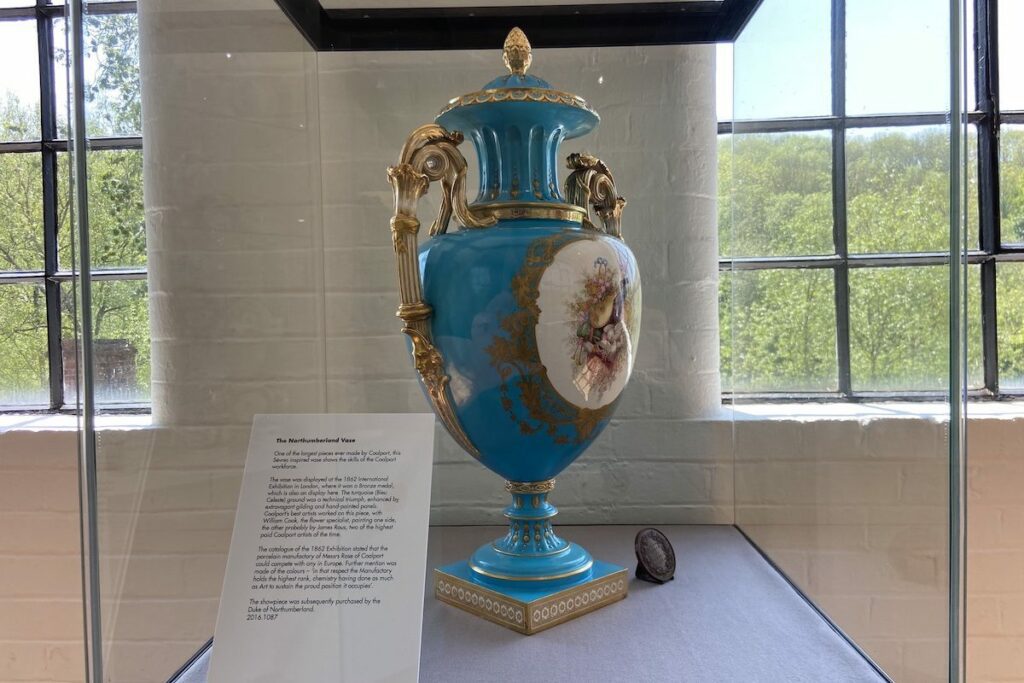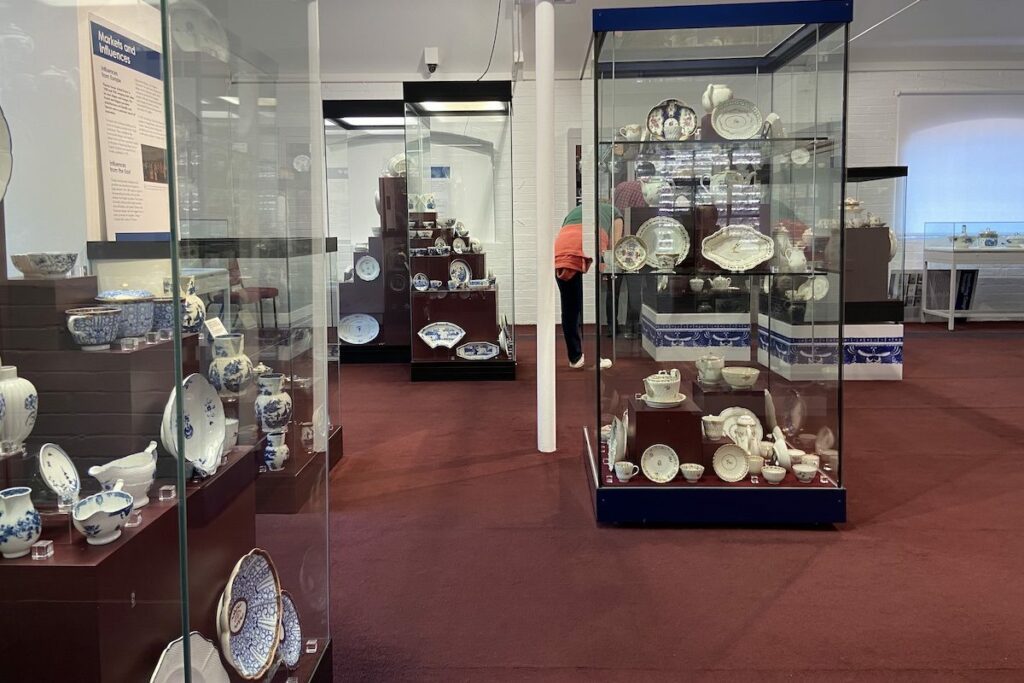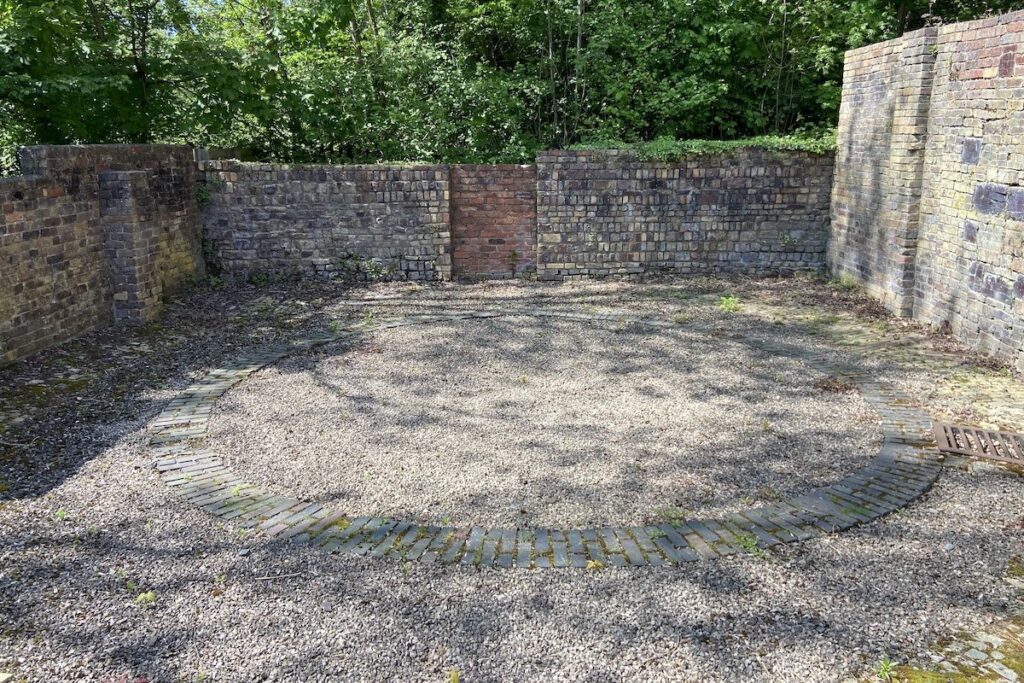Coalport China Museum
Coalport China Museum is a captivating destination for ceramic enthusiasts and history lovers. Located in the Ironbridge Gorge, this museum takes you on a journey through the heritage of fine china production. With its extensive collection of exquisite porcelain pieces, visitors can explore the evolution of Coalport China, from its inception in the late 18th century to its contemporary designs. From delicate tea sets to intricate figurines, the Coalport China Museum provides a fascinating glimpse into the artistry and craftsmanship of this renowned British pottery, which includes live demonstrations.

Key info
| Address | High St, Coalport, TF8 7HT |
| County | Shropshire |
| Established | 1796 |
| Museum opened | 1976 |
| Maintained by | The Ironbridge Gorge Museum Trust |
| Heritage category | Listed Building Grade II* |
Visiting guide
Paid car park
Gift shop
Toilets
What can I expect when visiting Coalport China Museum?
We start in the courtyard outside the main entrance where you will see the remains of the Shropshire Canal, which delivered tub boats carrying coal and limestone from the mines of east Shropshire down to the River Severn where the raw materials were transhipped downriver. You can see why Coalport China Museum was built here because the location was convenient with a constant supply of coal from the canal and the adjacent river for shipping out finished products.

Look to your right and you will see the John Rose building, which is the earliest surviving structure of the China works. It was built in the early 19th century and functions as a youth hostel today.

Turn around and head towards the museum front entrance. To the left of the door is the bricked up remains of an arch where the canal would have originally run through. This marks an early part of the museum building that was constructed as a transhipment warehouse.

Enter the museum, purchase your ticket, or pass, then head up to the first gallery where you will see a collection of pottery from Bradley & Company, a firm that stood opposite the China works of John Rose on the other side of the canal. Bradley specialised in earthenware, which is pottery that is slightly porous, and course initially made with high quality cream colouring. The firm was amalgamated by John Rose into the expanding site of the Coalport China Works.

Nearby is the Northumberland Vase, one of the largest pieces ever made at Coalport. It is a showpiece to demonstrate the skills of the workforce and was displayed at the 1862 International Exhibiton in London where it won a Bronze medal, which is also on display. The exhibition catalogue states Messrs Rose of Coalport could compete with any in Europe.

We found this item to be of particular interest. It is a Coalport China moustasche cup with pink flower decoration and marked England crown circa 1900.

Another exhibit displays some of the earliest porcelain products by John Rose whilst he controlled another works across the river before moving to Coalport. Many of the items date from 1792 to 1820.

Once you have had a chance to see all the exhibits on this floor, head upstairs to the next where you will find a display of products from the Caughley China Works, which existed nearby at Broseley and is where John Rose started his training before founding his works at Coalport. In the early years, the works at Caughley concentrated on blue and white porcelain to perfect the process of transfer printin from copper plates. Designs were printed in cobalt blue on tissue paper, then applied to the absorbent procelain. The tissue was washed away and the piece was dipped in glaze and re-fired to seal the pattern.

Once you have finished viewing this floor, head back downstairs and take the door leading outside into the kiln courtyard. Head north and turn right into the pottery workshop. This small building is a typical example of the space that existed during the heyday of the China works, which highlights how the site expanded without any real plan. There were many more small workshops muddled together such as this example that have since been demolished.

As you exit, head right into the bottle kiln a view of how it would have operated. Inside the main structure is the interior kiln loaded with saggars, rough clay containers into which China was placed to protect it from flames, soot, and smoke during firing. At the bottom you can see the firemouths where the coal fire was lit. Heat was channelled under the kiln floor up through the stacked saggars.

As you exit the kiln, head right into a small courtyard where the remains of the Smuggler Kiln can be seen. This structure most likely was built from recycled materials from the Caughley factory, which John Rose had ran before demolishing in 1814. The kiln was small and used for quick firing probably enamel colours or gold decoration. The name of the kiln may have been stated by workers hiding beer in this far corner of the site. Alcohol was forbidden and those who offended were fined; however, many workers believed that beer had health benefits, which we now know to be true as opposed to drinking polluted water taken from the River Severn.

Head back into the kiln courtyard and turn right into the Saggar workshop. Saggar manufacturing is now an endangered skill because they are no longer required due to the use of modern electric kilns. It’s refreshing to see Saggar making is still demonstrated at the museum and we were lucky enough to film this process delivered by Justine, the resident Saggar expert. Her creations are now sold as plant pots in the gift shop.
Head back to the courtyard and enter the bottle kiln adjacent to the main building, which is the start of a winding exhibition that details more about the history of the site and the manufacturing of China. Then head to the southern end of the site and enter the long workshop, which contains numerous exhibitions about the different kinds of porcelain. Notice the shelves are not fixed to their supports. That is because workers would have carried these shelves around the site with products sitting on them.

The long workshop is still used by skilled artisans who are keeping the tradition of China decoration alive and well. We were honoured to be given a demontration of decorating a plate with a porcelain ink pen by Karen, a resident artisan.
Don’t forget to peruse the gift shop on your way out.
How long does it take to visit Coalport China Museum?
You will need no longer than 2.5 hours to see all the exhibits in the museum, which includes demonstrations.
How do I get to Coalport China Museum?
If you are arriving by car, use the museum car park, where there is a charge. There is a bus stop by the entrance. Visit the museum website for more info on transport.
Is Coalport China Museum suitable for a picnic?
The site does have benches where you could get away with sandwiches and flask of tea. The museum in situated on the banks of the Severn, which has multiple green areas that are suitable for a picnic.
History of Coalport China Museum
1772 – Thomas Turner of Worcester takes over an old earthenware factory at Caughley near Broseley, not far from where Coalport would be founded. Turner starts manufacturing products using soft paste porcelain. John Rose would later work at Caughley as an apprentice under Turner.
1793 – The Hay Inclined Plane opens, which extended the reach of the Shropshire canal down to the River Severn thus giving birth to the settlement of Coalport.
1796 – The Coalport China Works are established by John Rose aged 21 with financial backing from Edward Blakeway, a local entrepreneur. The site of the works was chosen due to the convenient transport links provided by the Hay Inclined Plane and the Severn. To begin with, Rose’s products resembled those of Caughley using blue transfer-printed designs on a porcelain body. Some wares were sold to London firms for high quality hand-painted decoration. As Rose’s reputation grew, he attracted skilled artists and workers from other factories, especially those from Caughley. In the same year, another competing factory was established alongside John Rose at Coalport by Walter Bradley and William Reynolds, known as Bradley & Company.
1799 – The Caughley porcelain works are sold to John Rose. By this point, the quality of product had declined due to the limited raw materials that were available.
1800 – Bradley & Company becomes the China Works of Reynolds, Horton and Rose after a new business partnership is formed between William Reynolds, William Horton, and Thomas Rose, the brother of John Rose. The new works were built on the site of the main building of the Coalport China Museum, just a few yards from the Coalport China Works of John Rose. The products of Thomas Rose were similar in style and quality to that of his brother’s. Both were ‘hybrid hardpaste’ porcelains, which means they did not contain any bone; however, Thomas produced a wider range of patterns on teawares using overglaze enamelling and gilding applied by hand along with colourful ‘Japan’ or ‘Imari’ patterns and classical motifs.
1813 – Following a period of economic depression and competitive pressure from John Rose, the China Works of Reynolds, Horton and Rose is dissolved.
1814 – John Rose had gradually transferred all operations from Caughley to Coalport and the former factory was demolished. John Rose also takes over the former China Works of Reynolds, Horton and Rose. His brother Thomas returned to the family farm near Caughley. The expanded Coalport China Works continues to flourish.
1841 – John Rose dies and his brother Thomas and nephew William takes over management.
1926 – The Coalport China Works closes and operations are moved to Stoke-on-Trent.
1930s – Several buildings are demolished included the tall chimney visible in the early 20th century photographs.
1940s – During the Second World War, the site was used by several essential war engineering firms, which had been bombed out of Birmingham and London.
1968 – Ironbridge Gorge becomes part of the new town of Telford.
1975 – The last engineering firm Chilcotts moves out of the former China works. Part of the site was then acquired by the Ironbridge Gorge Museum Trust.
1976 – The Coalport China Museum opens.
Sources
Historical content sourced from museum information boards.

 Gloucester Docks
Gloucester Docks